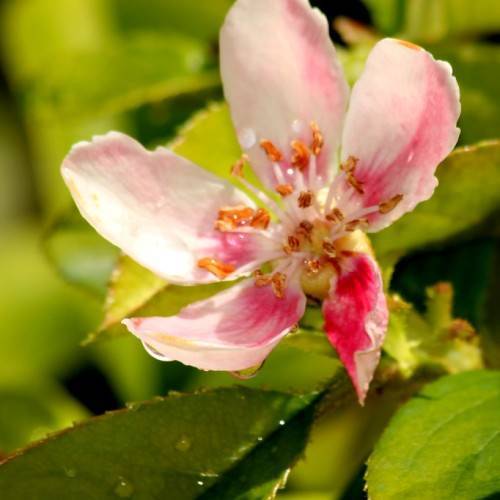
Chinese-quince
Pseudocydonia sinensis
Cycle:
Perennial
Watering:
Average
Hardiness Zone:
6 - 8
Flowers:
Flowers
Sun:
Full sun
Fruits:
Fruits Ready In Fall
Edible:
Yes
Leaf:
Yes
Growth Rate:
Low
Maintenance:
Low
Drought Tolerant:
Yes
Salt Tolerant:
Yes
Thorny:
Yes
Care Level:
Medium
watering
Chinese-quince should be watered frequently but only enough for the soil to remain slightly moist, not wet. During its active growing season of late spring to summer, it should be watered on average once every 2 weeks. In winter, waterings should be reduced to every 4-6 weeks.
sunlight
Chinese-quince (Pseudocydonia sinensis) prefers full sun exposure throughout the day and needs at least 6-8 hours of direct sunlight to thrive. It enjoys a long growing season of 10-12 hours of direct light a day during the spring, summer, and fall. It is best to provide the plant with shade in the hottest parts of the day and protection from the wind. During the winter, it is best to provide indirect light throughout the day, with the plant receiving at least 2-4 hours of direct light a day.
pruning
Chinese quince (Pseudocydonia sinensis) should be pruned in the spring, before new growth occurs. The best time to prune is after the last frost of the season, usually in late March or early April. Pruning should be done to establish shape and to remove crossing branches, dead wood, or suckers. This species responds well to pruning so it can be pruned heavily without fear of damaging the plant. Pruning should be done selectively, taking into account the shape and size of the plant. Be sure to clean and sterilize pruning tools before and after use to prevent the spread of disease.
